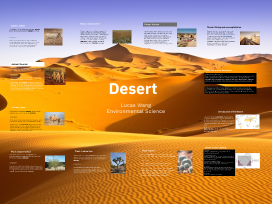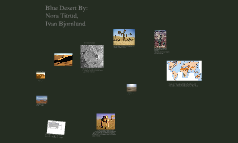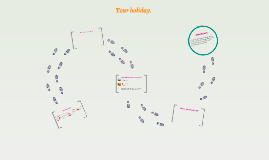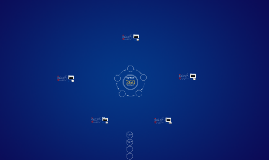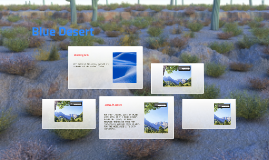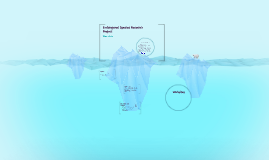Desert presentation
Transcript: Threat: Urbanization Threat: Tourism Animal: Addax Threat: Mining and overexploitation The addax is an endangered antelope species native to the Sahara Desert habitat of Africa. Desert regions are often targeted for urban expansion and infrastructure development due to their relatively low population density. Construction of cities, roads, and industrial facilities can disrupt and fragment natural habitats, leading to the threat of biodivesity and habitats damage. Desert areas often attract tourists and recreational activities such as off-road vehicle use, hiking, and camping. Unplanned tourism and irresponsible recreational practices can result in habitat destruction, disturbance to wildlife, and littering, leading to negative impacts on desert ecosystems. Deserts are rich in mineral resources, such as oil, gas, fossil fuel. However, too much mining operations can result in habitat destruction and water contamination. Additionally, the extraction of fossil fuels contributes to greenhouse gas emissions and exacerbates climate change. Adaptation: Addax has evolved efficient mechanisms for conserving water. They can obtain much of their water requirement from the vegetation they consume. Also, their kidneys are adapted to concentrate urine, minimizing water loss. Animal: Meerkat The meerkat is an organism which survived in the desert habitats of southern Africa. 2 Reason to visit the desert 1. Wildlife and Biodiversity: Deserts animals and plants have unique and specialized adaptations that have allowed them to thrive in harsh conditions. Visitors are often attracted to the opportunity to observe and learn about desert-adapted wildlife, such as camels, meerkat, Cacutus, Addax and various species. Adaptation: First, Meerkats have a thin coat of fur that helps prevent overheating during the day. Furthermore, the predation relationship between birds, snakes and meerkat is a significant threat to meerkats. To survive, Meerkats have evolved various anti-predator behaviors, such as sentinel behavior, which one or two meerkats keep watch for potential threats while others forage for food. Desert 2. Stargazing and Dark Skies: Deserts are often remote and sparsely populated which provides ideal conditions for observing the night sky. With minimal light pollution, deserts offer breathtaking views of the stars, constellations, and celestial events. Animal: Camel Lucas Wang Environmental Science Introduction of the Desert The camel is a mammal species known for its ability to survive in the desert habitats. Adaptation: First, Camel's hump can store a lot of water, which can ensure its long-term travel hydration supply. Furthermore, the parasitism relationship between Camel and bot fly may weaken Camel's immune system. Bot fly may lays eggs and develop larve inside its nose. The parasitic infestation can cause respiratory problems for the camel. Dessert is an arid ecosystem characterized by sparse vegetation, extreme temperatures, and limited precipitation. Dessert usually has extremely hot day and extremely cold night. Deserts cover about one-third of the Earth's land. Biotic factors: Camel, Cactus, Meerkat... Abiotic factors: Sand, extremely temperature and flat topography. Desert's characteristic Plant: Cactus Plant: Joshua tree Plant: Desert-willow Cacti is an organism which features that allow them to thrive in the scarce water desert habitats. The desert willow is a plant species has evolved a range of adaptations that allow it to thrive in the desert habitats. Joshua tree is a plant species found in the arid regions of the southwestern United States which has remarkable adaptations to its harsh desert habitats. 1. Climate Deserts are characterized by a dry climate with low humidity and limited rainfall. 2. Average temperature Deserts typically have high daytime temperatures and low night temperature and significant temperature fluctuations between day and night. 3. Average precipitation amounts Deserts receive minimal rainfall, with annual precipitation amounts ranging from less than 25 millimeters. 4. Seasons The desert season includes hot season and cold season. The hot season is characterized by scorching temperatures, while the cooler season experiences relatively milder temperatures. 5. Locations Africa, North America and Australia. Adaptation: The desert willow has flexible branches and a slender, open crown, which helps it withstand strong desert winds. This structural adaptation reduce the risk of branch damage. Adaptation: First, Cacti's stem are capable of absording and storing water during rainfall period. Furthermore, Cacti can developed mutualism relationship with other organisms. For example, they may build mutualism with insects or birds, which pollinate their flowers and get water in exchange for food or shelter. Adaptation: Joshua trees are adapted to extreme temperature fluctuations in the desert. Their light-colored leaves help reflect sunlight and reduce heat absorption.






